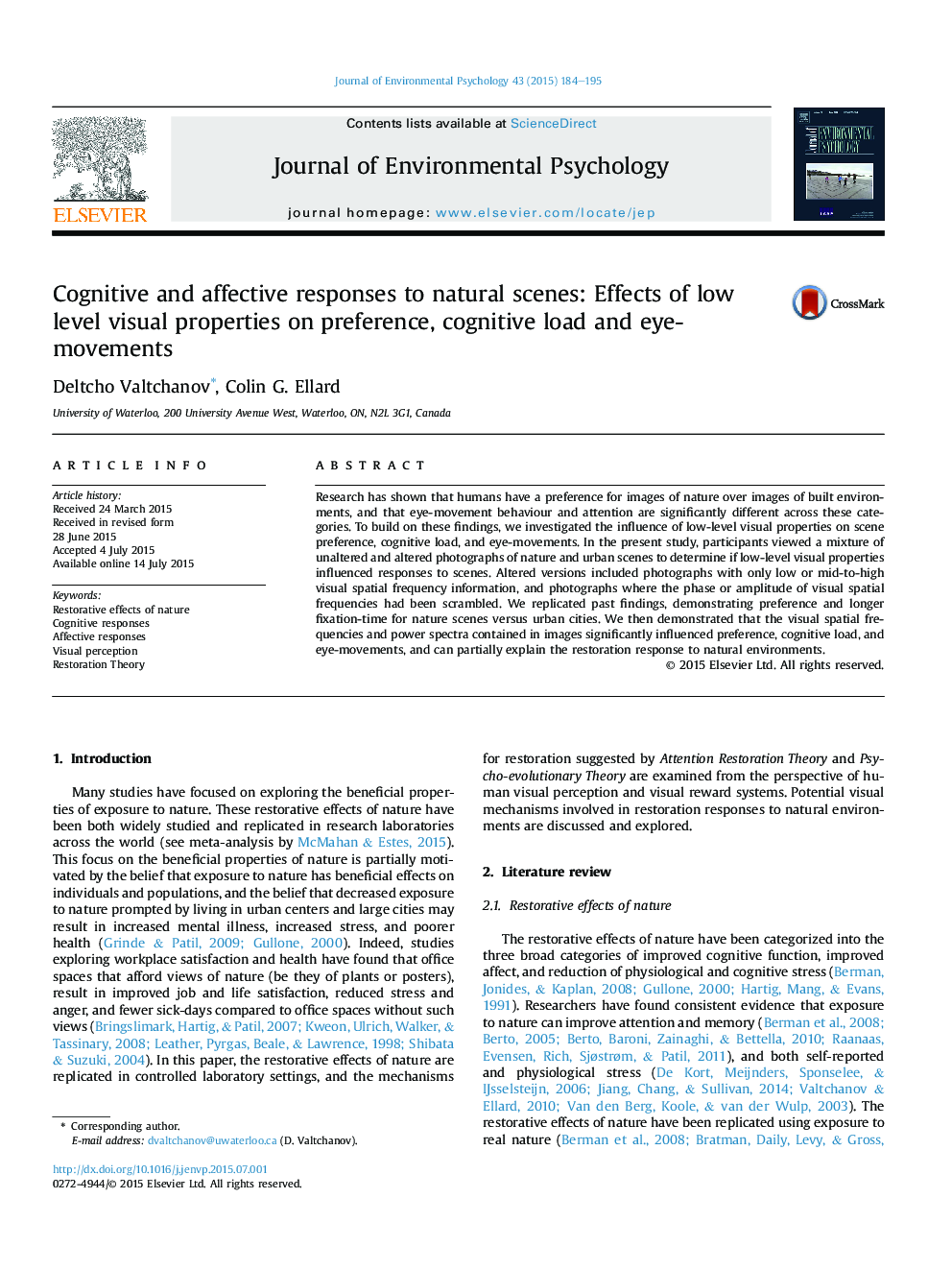| Article ID | Journal | Published Year | Pages | File Type |
|---|---|---|---|---|
| 7245841 | Journal of Environmental Psychology | 2015 | 12 Pages |
Abstract
Research has shown that humans have a preference for images of nature over images of built environments, and that eye-movement behaviour and attention are significantly different across these categories. To build on these findings, we investigated the influence of low-level visual properties on scene preference, cognitive load, and eye-movements. In the present study, participants viewed a mixture of unaltered and altered photographs of nature and urban scenes to determine if low-level visual properties influenced responses to scenes. Altered versions included photographs with only low or mid-to-high visual spatial frequency information, and photographs where the phase or amplitude of visual spatial frequencies had been scrambled. We replicated past findings, demonstrating preference and longer fixation-time for nature scenes versus urban cities. We then demonstrated that the visual spatial frequencies and power spectra contained in images significantly influenced preference, cognitive load, and eye-movements, and can partially explain the restoration response to natural environments.
Related Topics
Social Sciences and Humanities
Psychology
Applied Psychology
Authors
Deltcho Valtchanov, Colin G. Ellard,
